The Updated Porsche Cayenne Coupe
Sports Car Meets SUV
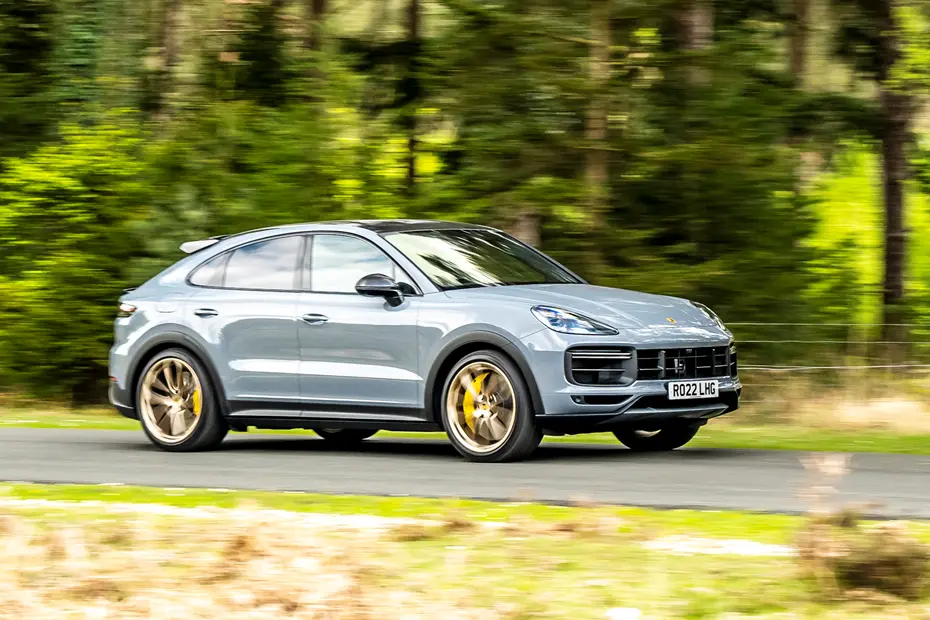
The Ultimate Sports SUV Gets Better
If you've ever thought regular SUVs were just a bit too... ordinary, the Porsche Cayenne Coupe might be exactly what you're looking for. This sleeker, sportier version of Porsche's bestselling Cayenne has just received a major update, and the changes go far beyond the usual minor facelift.
While some car magazines initially dismissed the Cayenne Coupe as "the answer to a question no one was asking" when it launched in 2019, buyers have proven them wrong. These coupe-SUVs are popular, and this Porsche version has become a significant part of the brand's sales success.
Key Points
Major update: One of the most extensive product upgrades in Porsche's history
New engines: Updated V6 and V8 powertrains with more power across the range
Plug-in hybrids: New E-Hybrid models with larger 25.9kWh battery and up to 46 miles of electric range
Stunning performance: Flagship Turbo E-Hybrid produces 739PS and hits 62mph in just 3.7 seconds
Improved handling: New two-valve shock absorbers and wider tires enhance the already class-leading dynamics
Completely redesigned interior: New digital cockpit with up to three screens and redesigned dashboard
Practical for a coupe: Two individual rear seats (optional '2+1' layout) and 592-liter boot (434 liters in E-Hybrid)
Premium pricing: Starting from £73,000, rising to around £154,000 for the top Turbo E-Hybrid with GT Package
Subtle styling updates: Resculpted bonnet, swollen wings, new LED headlights and redesigned rear light bar
Competitive efficiency: E-Hybrid models offer as little as 33g/km CO2 and up to 188.3mpg combined
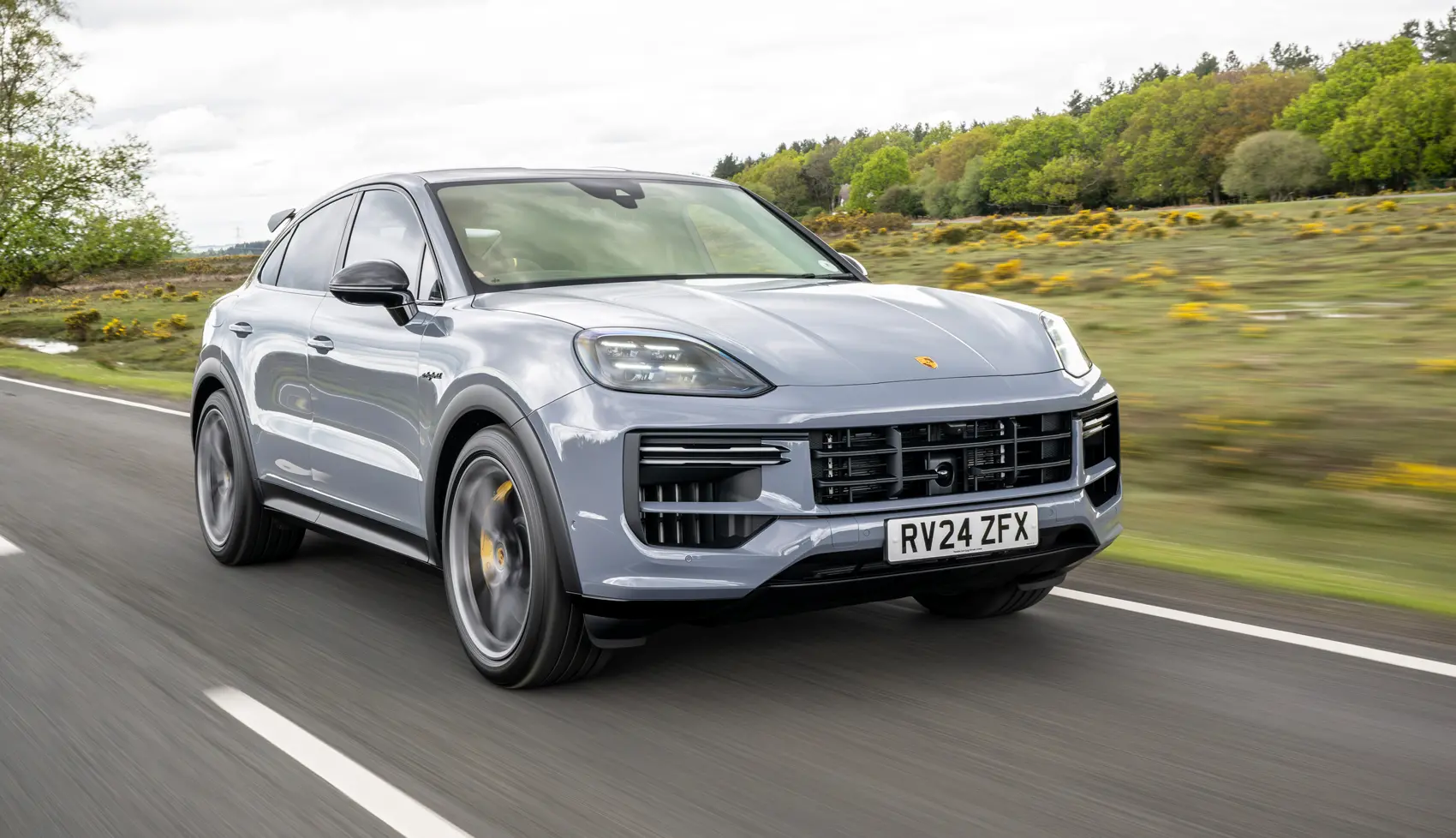
What's New?
The changes to this updated model are far-reaching. Porsche describes it as "one of the most extensive product upgrades in its history," and that's no exaggeration.
Under the hood, there's a completely new engine lineup. The base model gets a twin-turbo 3.0-liter V6 with 353PS, replacing the old 2.9-liter unit. The Cayenne S, which used to have a V6, now gets a twin-turbo 4.0-liter V8 with 474PS – the same basic engine you'll find in high-end Lamborghinis.
The hybrid models get significant upgrades too, with a larger 25.9kWh battery that extends electric driving range to around 46 miles. The E-Hybrid combines the V6 with an electric motor for a total of 470PS, while the S E-Hybrid bumps that up to 519PS.
At the top of the range sits the incredible Turbo E-Hybrid, which pairs the V8 with electric power for a combined 739PS and 950Nm of torque. It's the most powerful Cayenne ever, hitting 62mph in just 3.7 seconds and touching 183mph flat out. For the ultimate version, there's even a GT Package that adds extra performance goodies.
Handling Like No Other SUV
The Cayenne was already the best-handling large SUV on the market, but Porsche hasn't rested on its laurels. The updated Coupe gets special new two-valve shock absorbers that work with the optional air suspension to improve both cornering ability and ride comfort.
Wider tires that can run at lower pressures enhance grip, and as before, you can add optional rear-wheel steering and active anti-roll systems if you want the ultimate in handling precision.
Despite all this tech, what really sets the Cayenne Coupe apart is how natural it feels to drive. The steering is direct and meaty – completely different from most large SUVs – and despite weighing around 2.3 tons, it corners with remarkable poise and agility.
And yes, just like the regular Cayenne, it can handle off-road driving too, though you might want to swap those fancy alloys for something more rugged if you're planning any serious adventures.
Sleeker Looks
The Cayenne Coupe sits about 20mm lower than the standard Cayenne, with a roof that slopes elegantly toward the rear. To compensate, it's slightly wider and longer, giving it more balanced proportions.
For this update, Porsche has resculpted the bonnet and given the car more muscular wings. There are new matrix LED headlights (with an impressive 32,000 pixels per cluster), fresh wheel designs in sizes from 20 to 22 inches, and a redesigned rear with a "three-dimensional" light bar.
It's still more understated than rivals like the BMW X6 and Mercedes GLE Coupe, but that's part of its appeal – this is a car that doesn't need to shout about its performance credentials.
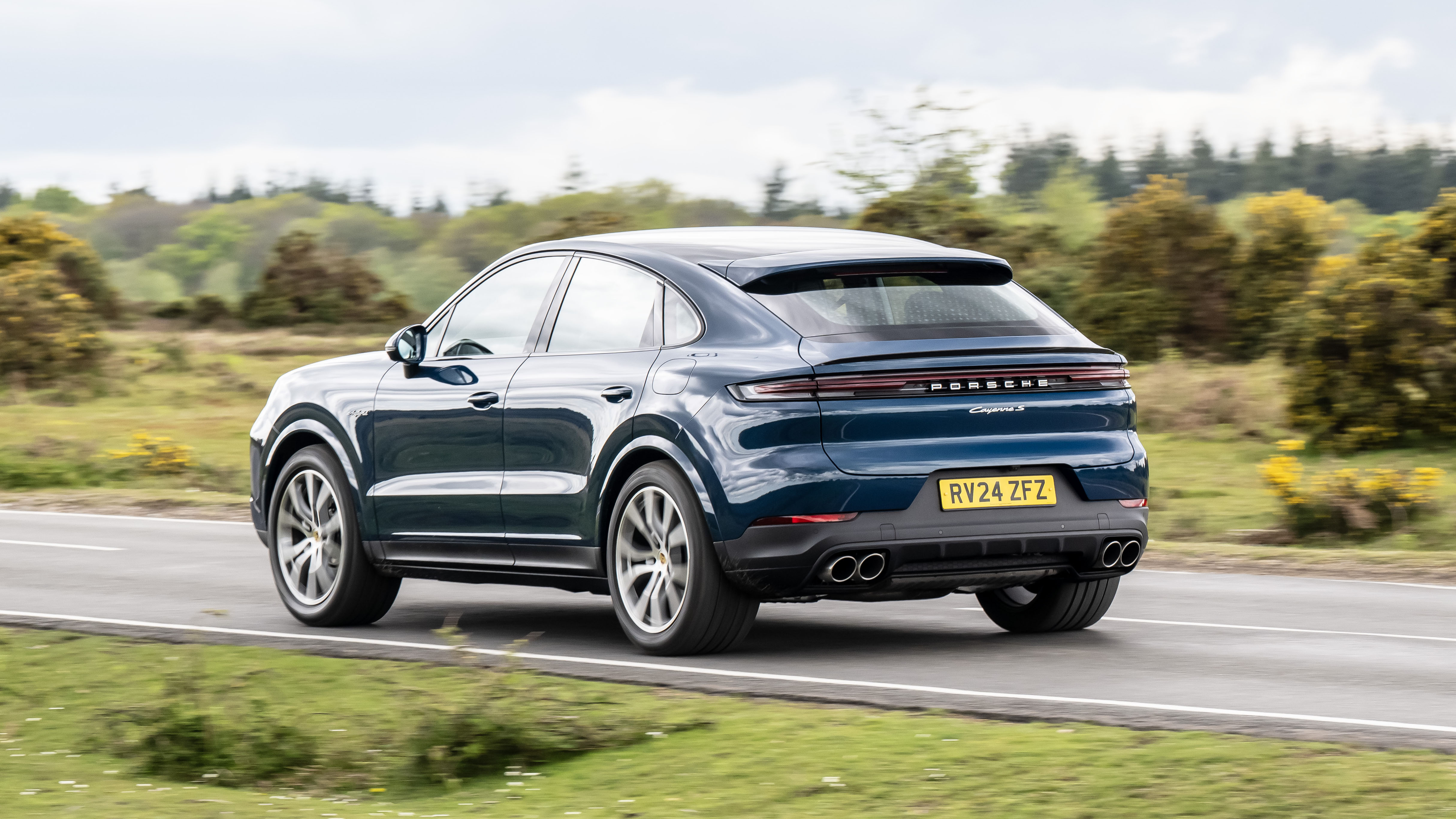
Completely Redesigned Interior
The biggest changes are inside, where Porsche has completely rethought the dashboard and controls. There's now a full-width digital panel with up to three screens: a 12.6-inch curved instrument display for the driver, a 12.3-inch central infotainment screen, and an optional 10.9-inch touchscreen for the front passenger.
The instrument display can be configured in various ways, including a classic five-dial layout reminiscent of the 911. The steering wheel, center console, and dash-mounted gear selector are all new as well, borrowing design elements from the electric Taycan.
Roof options remain the same – either a panoramic glass panel or a lightweight carbon fiber roof with a distinctive "double bubble" design. Various lightweight packages are available, offering carbon fiber trim and special seat upholstery for those seeking a more sporting feel.
Practical Despite the Sleek Shape
Unlike the regular Cayenne, the Coupe replaces the rear bench with two individual seats as standard, separated by a storage tray and cup holders. If you occasionally need to carry a fifth person, a "2+1" layout is available as an option.
The sloping roofline does reduce boot space compared to the standard Cayenne – down from 772 to 592 liters (or 434 liters in the E-Hybrid versions due to the battery). But that's still plenty for most needs, and more than enough for a weekend getaway or a shopping spree.
Price and Equipment
Prices start at just over £73,000 for the base V6 model, with a significant jump to around £82,000 for the E-Hybrid. The V8-powered Cayenne S costs around £88,000, while the S E-Hybrid is about £90,000.
If you want the top-of-the-line Turbo E-Hybrid, you'll need deep pockets – it starts at around £133,000, rising to £154,000 with the GT Package. That's about £3,000 more than the equivalent standard Cayenne SUV models.
Even the base model comes well equipped, with leather interior, adaptive suspension, park assist, cruise control, and Porsche's infotainment system with navigation. Key options for the updated model include the two-chamber air suspension, upgraded HD headlights, and that new passenger-side touchscreen.
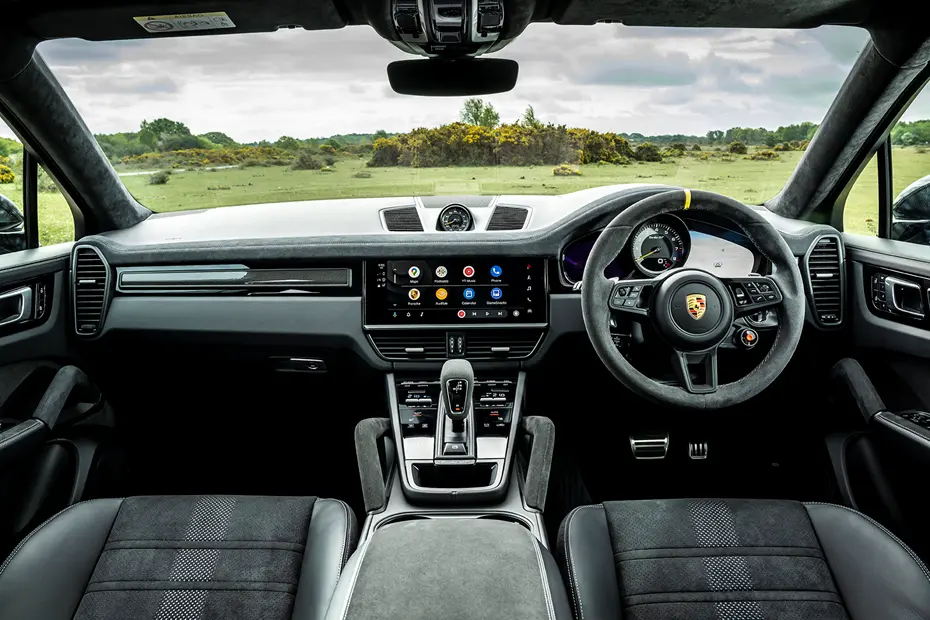
Running Costs
If you're buying a Porsche Cayenne Coupe, running costs probably aren't your primary concern. But the hybrid models offer impressive efficiency for such high-performance vehicles.
The E-Hybrid models produce just 33g/km of CO2 (qualifying for an 8% BiK tax rate) and can achieve up to 188.3mpg on the combined cycle if you keep the battery charged. With a 46-mile electric range, many daily commutes could be completed without using any fuel at all.
The regular models are, as you'd expect, thirstier. The base V6 manages up to 25.9mpg and emits 247g/km of CO2, while the V8 Cayenne S returns up to 22.6mpg with 284g/km of CO2. Real-world consumption will likely be lower, especially if you enjoy the performance on offer.
The Bottom Line
The updated Cayenne Coupe takes what was already the best-handling large SUV coupe and makes it better in almost every way. With more power, improved technology, a completely redesigned interior, and even sharper handling, it sets a new benchmark for the segment.
Yes, it's expensive, and yes, a regular Cayenne is more practical. But for those who want something special – a car that combines genuine sports car handling with SUV practicality and dramatic styling – the Cayenne Coupe is in a class of its own.
While the full-electric Cayenne is coming in 2025, this extensively updated combustion model proves there's plenty of life left in the format. It remains the car to beat in its class, and the one that most convincingly answers the question: "Can an SUV drive like a proper Porsche?" The answer is an emphatic yes.

What's next?
Enjoyed this? Read our latest news
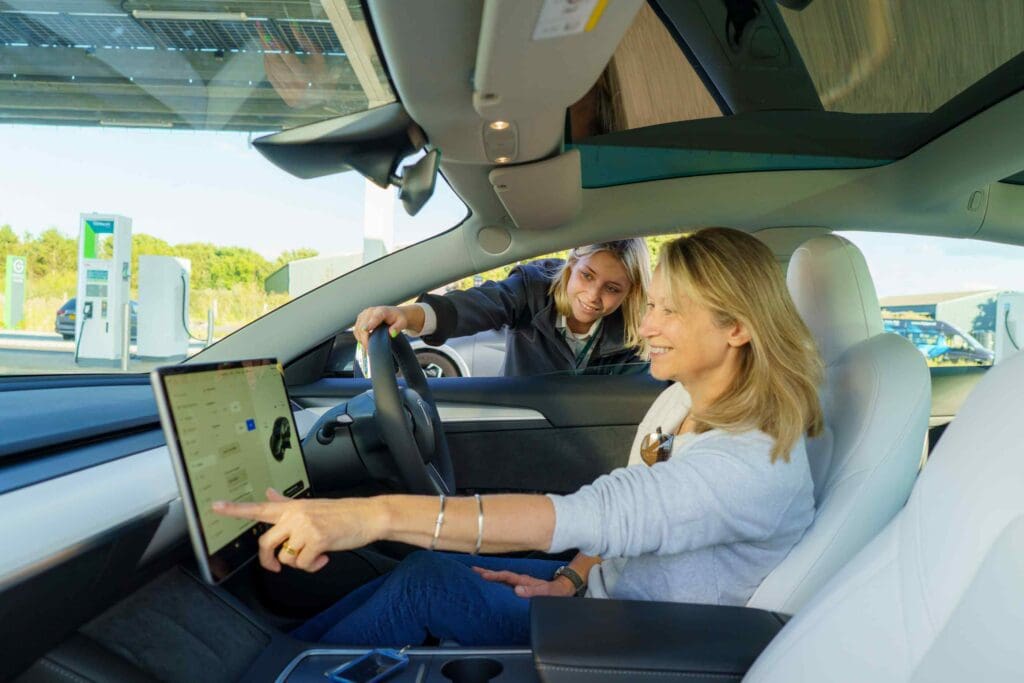
How Does the Heating Work in an Electric Car?
Electric cars don’t have engines pumping out heat, so their heating systems work a little differently. This guide explains how EVs keep you warm, what changes in winter, and how to heat the cabin without hammering your range.
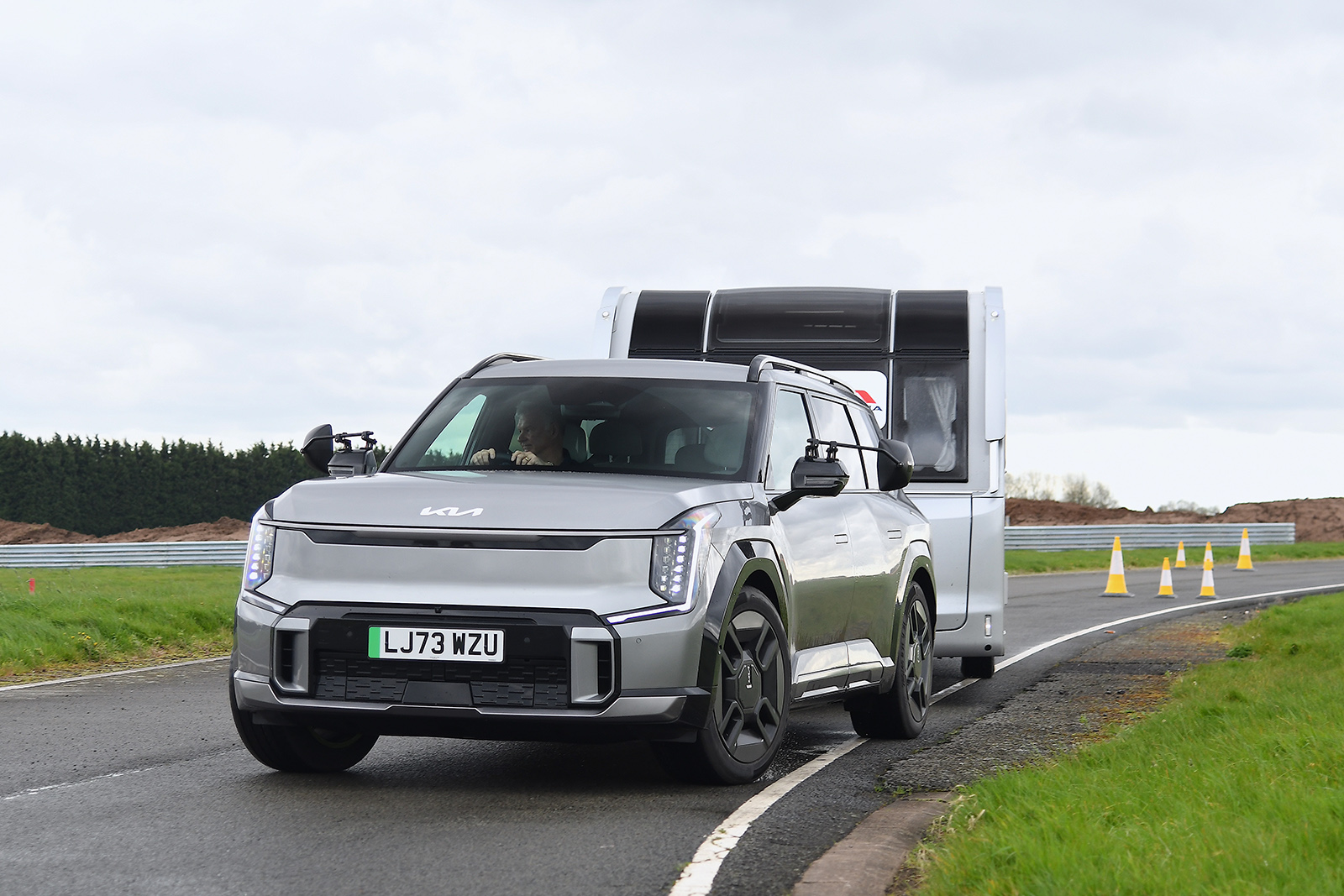
Can an Electric Car Tow a Caravan?
Towing a caravan with an electric car is totally possible — but not all EVs are built for it. In this guide, we explain what to check, which models to consider, and how towing affects range and charging.
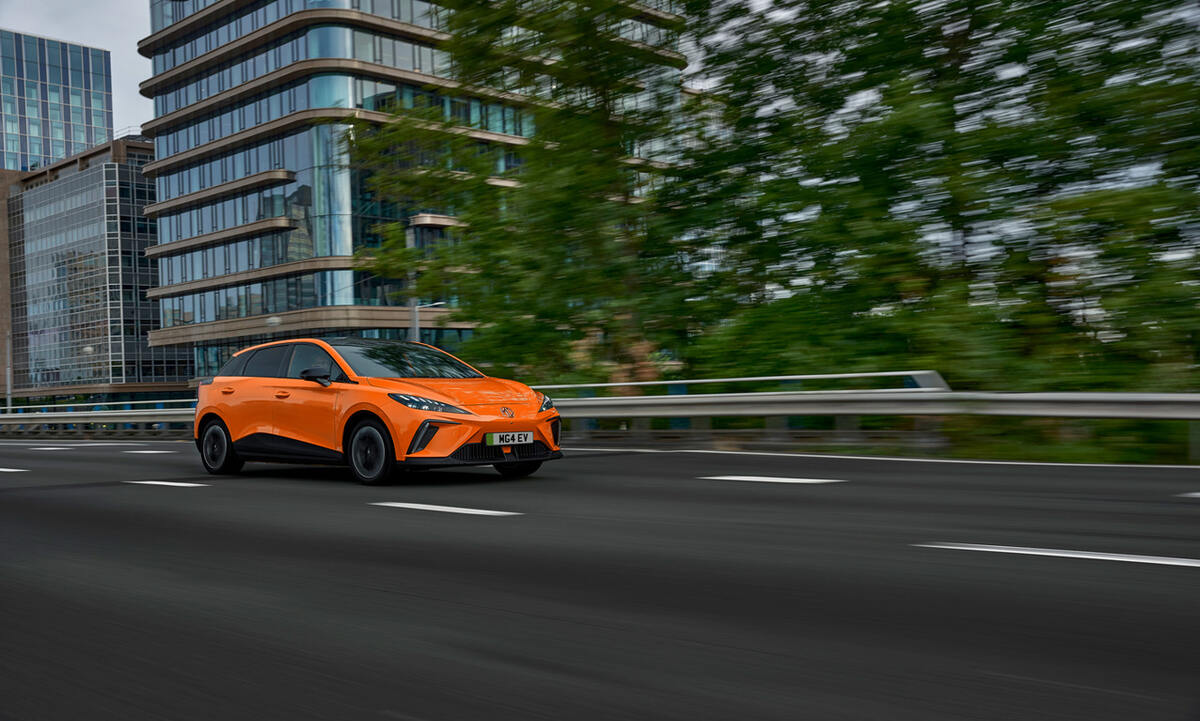
Are Electric Cars Cheaper to Insure?
Electric cars can be cheaper to run overall, but what about insurance? In this guide, we break down how EV insurance compares to petrol or diesel, what affects the cost, and how to get the best price.
Customer Stories
We've helped over 1,000+ customers find their dream car, hear what they have to say.
Read more reviews“As usual, top class service. The team at Motorlet provided first class service from beginning to end with the friendly helpful expertise of Josh and Wendy. Will continue to use their services as I have done for the past six years...” Keep reading
Diane Parish | Audi Q5

New deals weekly
Subscribe to get the latest offers, guides, new, and more, straight to your inbox.


















